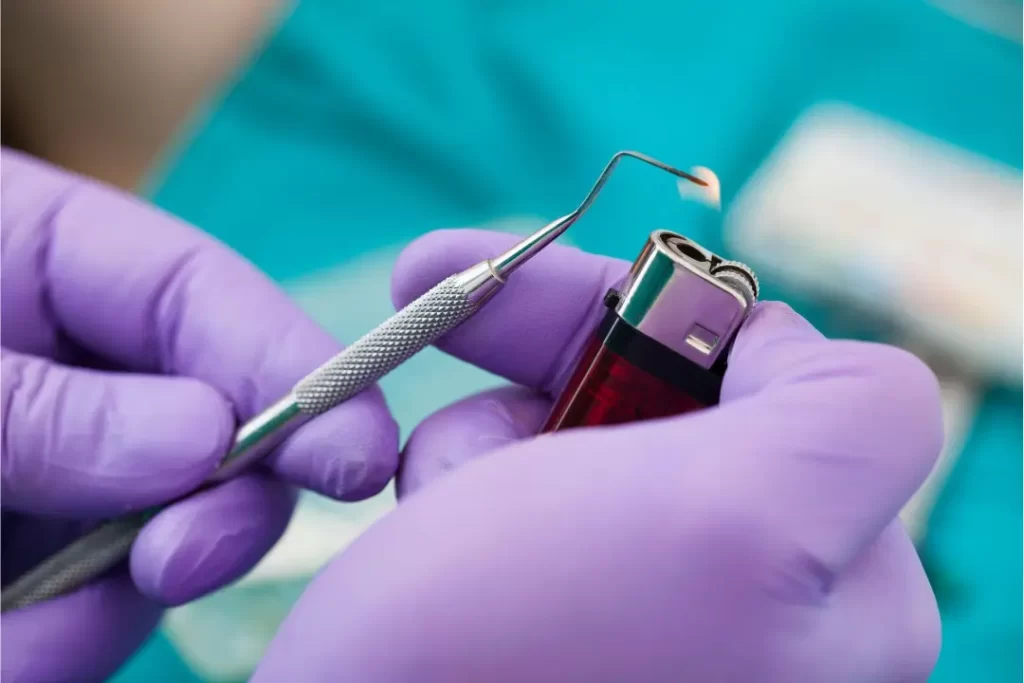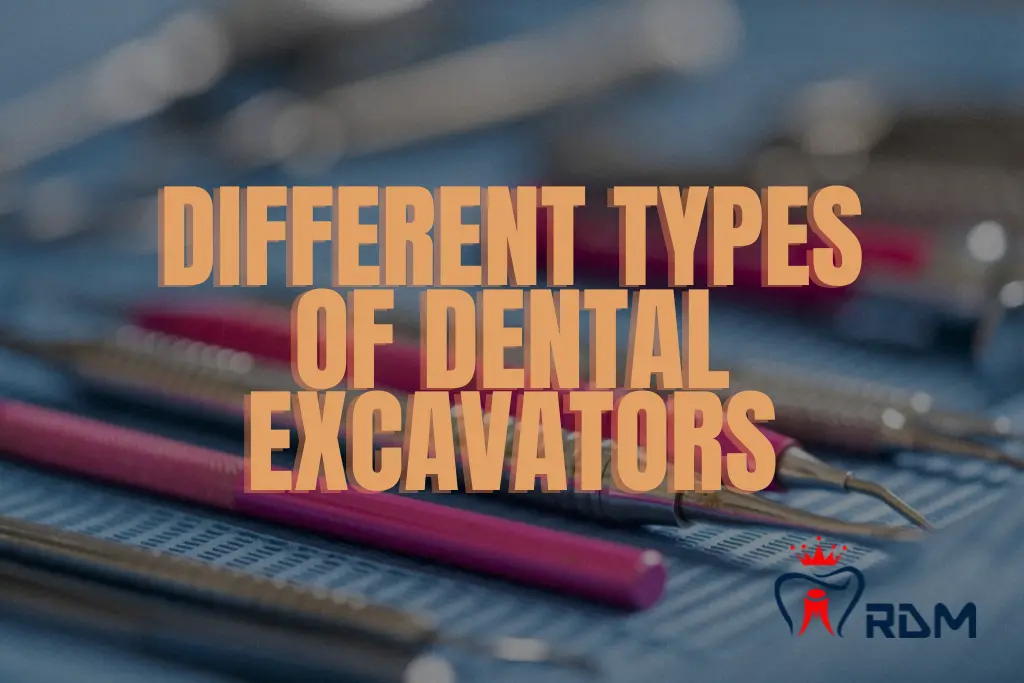Dental excavators are vital instruments used in dentistry for various purposes, including removing decayed material and preparing dental cavities. This article will explore the different types of dental excavators available, their features uses, and how to choose the right excavator for specific procedures.
Types Of Dental Excavators
There are several types of dental excavators commonly used in dental practices. Each type has its unique design and application. The following are the most common types:
Universal Excavators
Universal excavators are versatile instruments used for multiple procedures. They have a curved working end with a pointed tip and a spoon-shaped blade on the other side. The tapered tip allows for the precise removal of decayed material, while the spoon-shaped edge is helpful for cavity preparation and smoothing surfaces.
Spoon Excavators
RDM Spoon excavators have a spoon-shaped working end ideal for removing soft carious dentin and debris from the tooth. They are particularly useful for larger cavities and can effectively scoop out decayed material.
Hoe Excavators
Hoe excavators have a blade with a sharp edge, similar to a gardening hoe. They primarily remove deep carious dentin and prepare the tooth surface for restorations. Hoe excavators are known for their efficiency in cutting through hard dentin and enamel.
Hatchet Excavators
Hatchet excavators have a cutting blade with two sharp edges, resembling a miniature hatchet. They commonly excavate dentin and enamel in limited access, such as interproximal spaces. Hatchet excavators provide excellent control and precision during excavation procedures.
Binangle Excavators
Binangle excavators have a bent working end allowing better access and visibility in hard-to-reach areas. They commonly remove carious dentin and smooth cavity walls and prepare the tooth surface for restorations.
Features And Uses Of Dental Excavators
 Universal Excavators
Universal Excavators
Universal excavators are widely used in dental procedures, including caries removal, cavity preparation, and root canal treatment. Their versatility and dual working ends make them suitable for different tasks, ensuring efficient and precise excavation.
Spoon Excavators
Spoon excavators are designed explicitly for removing soft carious dentin and debris from the tooth. They are often used in larger cavities and are essential for achieving a clean and prepared tooth surface before restorations.
Hoe Excavators
Hoe excavators are commonly used in deep caries removal and cavity preparation. Their sharp edge enables effective cutting through hard dentin and enamel, ensuring thorough excavation.
Hatchet Excavators
Hatchet excavators excel in accessing and excavating interproximal areas where other excavators might be challenging. Their dual sharp edges provide precise cutting and control during excavation procedures.
Binangle Excavators
Binangle excavators are particularly useful in areas with limited access, such as molars or posterior teeth. Their bent working end allows for improved visibility and maneuverability, making them suitable for various excavation tasks.
How To Choose The Right Dental Excavators
When selecting a dental excavator, several factors should be considered:
Procedure requirements: Determine the specific task the excavator will use, such as caries removal, cavity preparation, or root canal treatment.
Tooth location: Consider the tooth’s location and accessibility. Different excavators are designed for specific areas of the mouth.
Operator preference: Dentists may have personal tastes based on their experience and comfort with particular excavator types.
Patient comfort: Choose an excavator that provides a comfortable experience for the patient, minimizing discomfort during the procedure.
Proper Techniques For Dental Excavation
Proper techniques for dental excavation ensure efficient and successful procedures. Here are the key steps involved:
Preparing The Dental Cavity:
- Isolate the tooth using a rubber dam or cotton rolls.
- Administer local anesthesia if necessary.
- Clean the tooth surface and surrounding area.
Removal Of Decayed Material:
- Select the appropriate dental excavator based on the requirements.
- Begin by gently removing the outer layers of carious dentin.
- Progressively excavate deeper, ensuring complete removal of decayed material.
- Use appropriate excavators for specific areas and tasks.
Finishing And Polishing:
- Smooth the cavity walls using an appropriate excavator.
- Check the cavity for any remaining decayed material.
- Finish the preparation with proper instruments.
Maintenance And Care Of Dental Excavators
 Proper maintenance and care ensure dental excavators’ longevity and effectiveness. Follow these guidelines:
Proper maintenance and care ensure dental excavators’ longevity and effectiveness. Follow these guidelines:
- Clean and sterilize excavators after each use according to the recommended protocols.
- Regularly inspect excavators for any signs of damage or wear.
- Replace excavators when necessary to maintain optimal performance.
- Store excavators in a clean and dry environment to prevent contamination.
Conclusion
RDM Dental excavators play a crucial role in dentistry, enabling efficient and precise removal of decayed material and cavity preparation. Dental professionals must understand the different types of excavators, their features, and their uses. Dentists can ensure successful procedures and improved patient outcomes by selecting the appropriate excavator and following proper techniques.
Frequently Asked Questions
What are dental excavators used for?
Dental excavators remove the decayed material and prepare dental cavities during dental procedures.
Are dental excavators safe to use?
Dental excavators are safe when used correctly and follow appropriate infection control practices.
Can dental excavators be sterilized?
Dental excavators can be sterilized using recommended protocols to maintain a sterile environment.
How often should dental excavators be replaced?
Dental excavators should be replaced when they show signs of damage or wear that may affect their performance or pose a risk of contamination.
Can dental excavators be used for other purposes?
Dental excavators are specifically designed for dental procedures and should not be used for other purposes to maintain their integrity and effectiveness.






 Universal Excavators
Universal Excavators